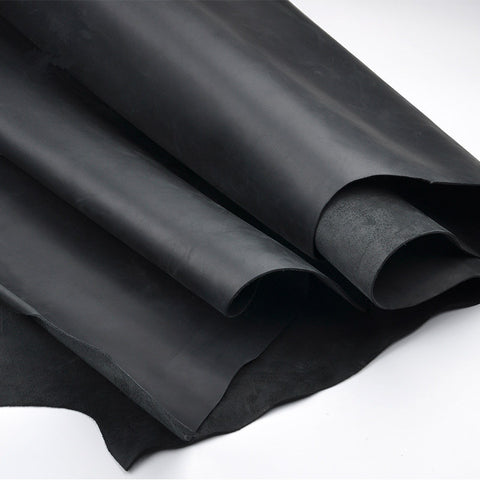According to Webster’s dictionary Napa Leather is defined as a soft, supple leather produced, esp. from sheepskin, by tawing.
Well, I would like to add more to it.
Napa leather, or simply napa, is a soft, smooth leather made from the skins of various animals (aniline leather, semi aniline leather). It’s a silky full grain leather.
Napa leather was first used to refer to glove and garment leather, and was called after the Napa Valley in California. This leather was renowned for its silky smoothness and suppleness.
As you can see, it’s made from full grain leather and may be sourced from any animal. Calves, lambs, and kid goats are the most common sources.
What is Nappa leather?
Emanuel Manasse developed the Napa leather when he was working at the Sawyer Tanning Company in Napa, California in 1875.
I’ve come up with the ideal analogy for Nappa Leather. It’s like Brownie of the Leathers. It’s soft and smooth, with a silky texture that reminds me of a chocolate ganache over brownies.
Coming to leather terminology, Nappa leather refers to any sort of bovine or sheep leather with a smooth hand, a particularly soft tempering, and a thin thickness. The finish that distinguishes this type of leather is typically non-covering (pure aniline or semi-aniline), which implies that in the vast majority of circumstances, they are high-quality leathers since the finish cannot “hide” any imperfections in the dermis.
How Nappa Leather Is Made?

The procedure called tanning makes napa leather. Tanning consists of up to 25 stages and might vary depending on the technique utilised from days to months. Napa leathers are frequently tanned using chrome tanning, which takes only a few days. Tanning of chromium is recognised for generating supple and flexible leathers.
Chromium tanning also creates leathers that are pretty good in terms of shading and colouring. This creates a highly attractive, supple leather that is appropriate for a variety of leathers including handbags, guides, bags, wallets and many fine leather products and personal accessories. In numerous colours, Napa leathers will also be both physically supple and aesthetically impressive.
What kind of products are made of Nappa leather?
Due to the softer and smoother qualities of napa leather, many vehicle owners think that this sort of leather might be excellent for car seats since it has a soft butter surface. Napa leather car seats overall are thought to be longer lasting and simpler to hold. They also offer the automobile a superior and more luxury design, which many picky car buyers desire.
For furniture upholstery, clothes such as coats and gloves, wallets, briefcases, handbags, bags and sticks, and heavy duty leather goods, including holsters and utility belts, this product is also highly popular.
Nappa leather for bags.

Since we have already talked about the softness of Napa Leather. I won’t be boring you guys.
Nevertheless, Napa Leather is a wonderful material for bags, due to its smoothness and softness. It has a unique lustre that allows it to be used on a regular basis. It is strong and long-lasting, so hard handling of the bag is not an issue.
As previously said, the leather is incredibly flexible and pliable. It does not wrinkle and is not as hard as other leathers. Good news: you no longer have to worry about wrinkles while folding your luggage in the overhead compartment!
The leather has an intact top-grain. As a result, it is more “breathable” and doesn’t hold moisture. So, no worries about taking the bag on a rainy day. It is protected with a natural waterproof cover.
Over time, the leather frequently develops a patina that enhances its appearance. Hence, you got yourself a modern yet vintage bag!
How do you take care of Nappa leather?
Cleaning Nappa leather is similar to cleaning other types of leather. Leather is a difficult material to clean, so you should be aware of the dos and don’ts.
It is critical to perform a spot test before cleaning the entire leather. In general, test a tiny area to confirm that the leather cleaner you are using will not harm the leather. You can clean the rest of the leather after ensuring that it is safe.
Clean the leather using a lint-free cloth that has been gently moistened. Take note of how wet the towel is. If it is excessively moist, the leather may discolour. If it is too dry, it will not remove the dirt, dust, or grime. Although this is more likely if the leather has been coloured with a water-soluble colourant. Take it lightly when rubbing it across the surface. Some of the moisture may air-dry off the surface, but to be cautious, you should wipe it dry.
You can use a leather cleaner if the filth, grime, or stain is tough to remove with simply water. You may look for cleansers and soaps designed to clean leather, such as Nappa.




 Mobile/What's App/Wechat
Mobile/What's App/Wechat E-Mail
E-Mail ADD
ADD




